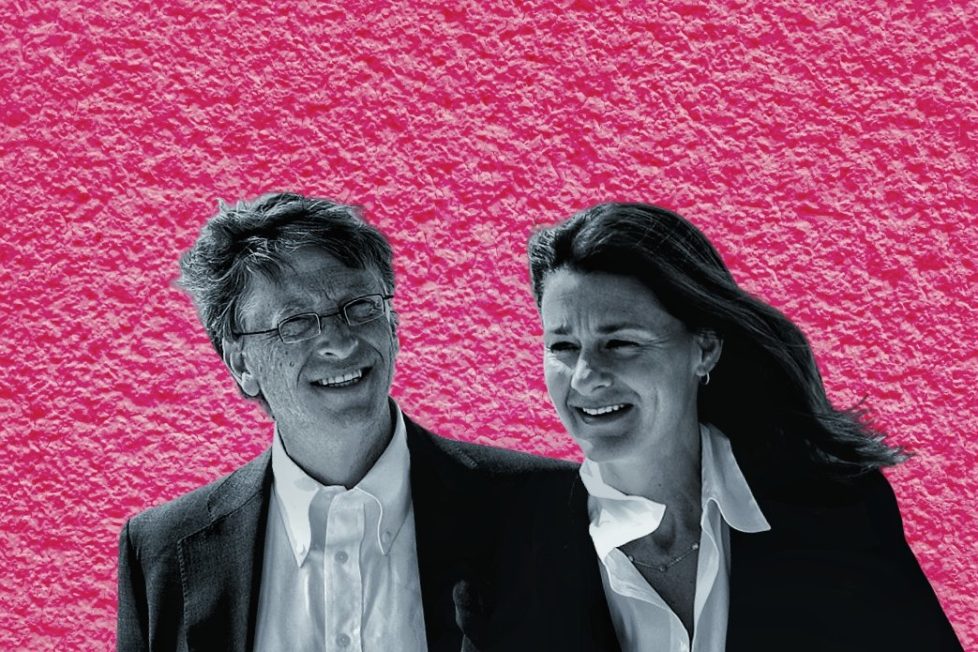Bill and Melinda Gates Foundation pledge to fight climate change, gender inequality

It’s been twenty years since the establishment of the Bill and Melinda Gates Foundation and in a recent letter reflecting on the past two decades, the couple has announced plans to focus philanthropic efforts on fighting climate change, closing the gender gap, and improving education in the U.S. On the climate change side, which Bill identifies as a key issue for Microsoft Corp., the foundation will fund and develop technologies that lower carbon emissions and support populations vulnerable to severe weather events.
Melinda says she will address a wide-range of gender-based inequalities, including poverty issues, access to health care, and gender norms.
“The data is unequivocal: No matter where in the world you are born, your life will be harder if you are born a girl,” she says.
“In developing countries, the experiences of boys and girls start dramatically diverging in adolescence. The average girl in sub-Saharan Africa ends her education with two fewer years of schooling than the average boy. One in five girls is married before her 18th birthday, trapping her on the wrong side of a power imbalance even within her own home.”
Women in high-income countries face gender inequality as well, which is “most visible” in the workplace, Gates says.
“Even though women in the U.S. earn college and graduate degrees at higher rates than men, they tend to be concentrated in certain majors and are often channeled into less lucrative jobs. Men are 70 per cent more likely to be executives than women of the same age. These numbers are even worse for women of colour, who are doubly marginalized by the combined forces of sexism and racism.”
RELATED: We need to stop telling minority groups to ‘dull their shine’ at work
Melinda says gender relations have been slow to improve because it isn’t a global priority, and she will help fast-track women into leadership roles in government, technology, finance, and health sectors.
This will be achieved — at least in part — via Pivotal Ventures, an investment and incubation company founded by Melinda that partners with organizations and individuals to invest in social change initiatives.

“Last October, I announced that Pivotal Ventures will commit $1 billion to accelerate gender equality in the U.S. over the next decade, an investment that I hope is seen as a vote of confidence in the experts and advocates already working on these issues—and an invitation for other philanthropists to make major commitments of their own, both in the U.S. and around the world,” she says.
Gates says her diversity initiative also includes students in the U.S. education system.
“The average American primary school classroom has 21 students. Currently, 18 of those 21 complete high school with a diploma or an equivalent credential (which is a significant improvement since 2000), but only 13 start any kind of postsecondary program within a year of graduating. Only seven will earn a degree from a four-year-program within six years,” she explains.
“It gets worse when you disaggregate by race. If every student in our classroom is Latinx, only six will finish their four-year degree program within six years. For a classroom of Black students, the number is just four.”

In support of this, the foundation cites efforts already underway, such as the Gates Millennium Scholars Program, which has provided full college scholarships to 20,000 students of colour.

Diversity and inclusion programs are becoming a sharper focus for some organizations, likely due to a growing body of evidence suggesting companies that support these initiatives are rated more favourably overall.
But some roll-outs are proving ineffective because in some cases, institutions are failing to recognize the difference between “diversity” and “inclusion.”
RELATED: ‘Death by a thousand cuts’: Real-life examples of microaggressions
“There’s a big difference between diversity and inclusion,” Jen Heemstra, an associate professor at the Emory University Department of Chemistry, recently said on Twitter.
There’s a big difference between diversity and inclusion. Diversity is getting everyone in the room. Inclusion is making sure each person has equal voice and opportunities.
— Jen Heemstra (@jenheemstra) December 9, 2019
Inclusion without diversity is unfair.
Diversity without inclusion is cruel.
We desperately need both.
“Diversity is getting everyone in the room. Inclusion is making sure each person has equal voice and opportunities. Inclusion without diversity is unfair. Diversity without inclusion is cruel. We desperately need both.”
Research suggests that gender and pay gaps can be attributed, at least in part, to societal pressures that are primarily placed on women — signaling an urgent need for more inclusive policies in professional and academic settings.
These factors may also fuel higher levels of stress, isolation, and loneliness, according to a recent survey by WebMD.
In a statement, WebMD vice president of strategy Christine Muldoon says her survey’s findings suggest workplaces need to do more to support women.
“Our survey highlights the generational, gender and life-stage differences that can have a significant impact on the success of a workplace well-being strategy,” she said.
“Employees experience well-being in distinctly different ways depending on who they are, and what is happening in their lives – which we know can have a huge impact on how they show up at work.”
